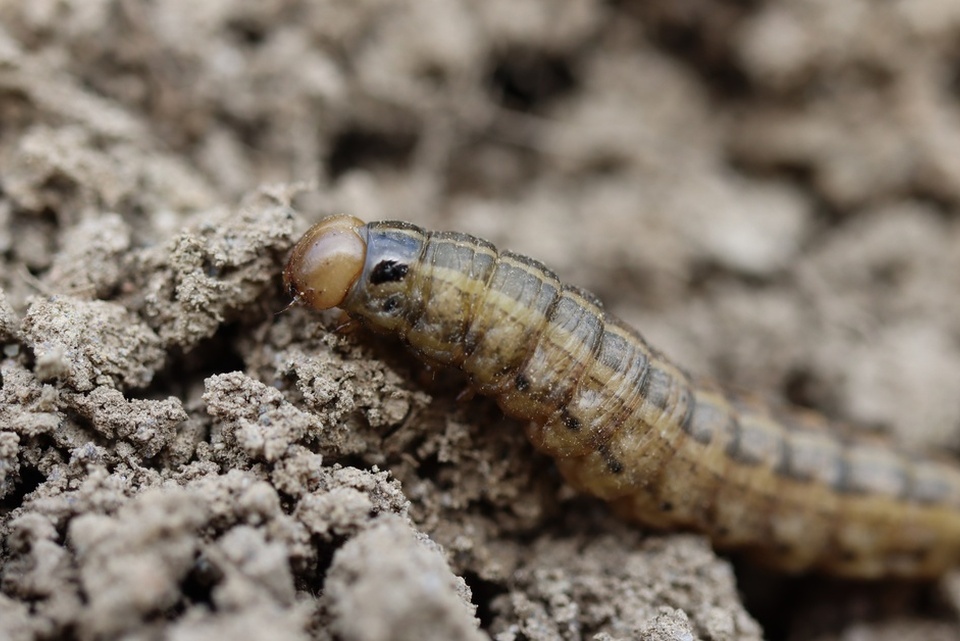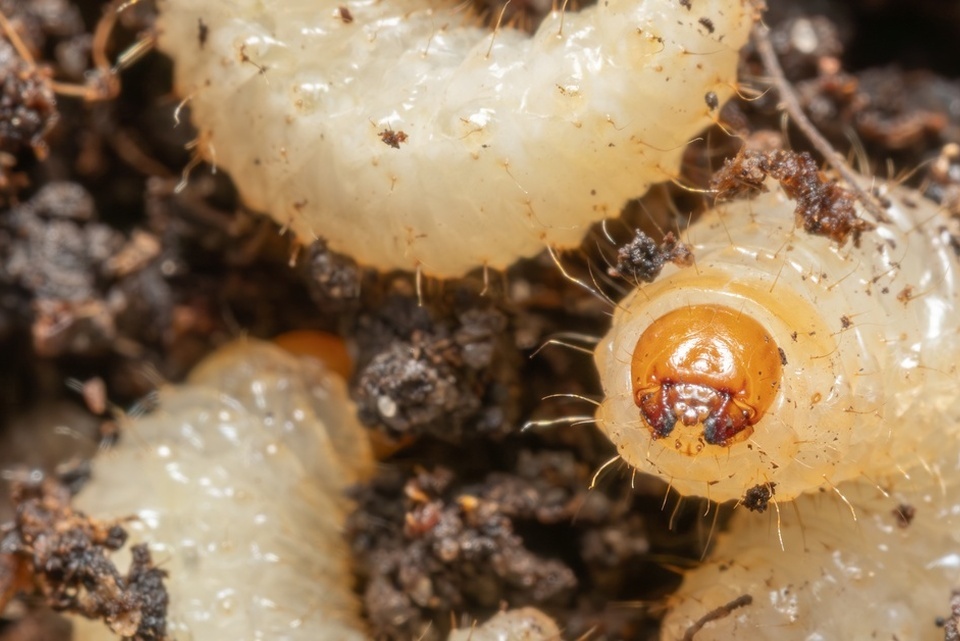How Pest Management Helps With Soil Health
Healthy soil holds nutrients, manages water, and supports plant roots. When soil is in good condition, crops thrive, but when it’s not, everything suffers. What many farmers may not realize is that pest control plays a key role in protecting soil.
Pests can quietly degrade soil quality, impacting its structure, moisture levels, and biological activity. That’s why it’s important to look more closely at how pest management helps with soil health—and how your pest control strategy can do more than protect what’s above ground.
How Pests Disrupt Soil
While many people think of pests as threats to leaves, fruit, or crops, a surprising number of insects do their damage underground. Insects such as grubs, wireworms, and root-feeding beetles live directly in the soil. They chew through roots, damage root systems, and leave plants struggling to absorb water and nutrients.
Other pests, including mole crickets and certain rodents, tunnel through soil, disturbing its structure and compacting the surrounding areas. This not only hinders plant development but can also increase erosion and reduce the soil’s ability to retain moisture. Over time, these disruptions can result in poor drainage, reduced fertility, and uneven crop performance.
Even when surface signs aren’t obvious, pests may still be active underground, gradually reducing the soil’s natural productivity. If unmanaged, this kind of deterioration can take multiple seasons to repair—if it’s even reversible.
The Chain Reaction of Damage
Once pests begin affecting soil, the consequences often go beyond the initial damage. What may start with root damage or disturbed plant structure can set off a chain reaction. For example, as pests chew through root systems, plants lose the ability to anchor properly or absorb nutrients effectively, which leads to weaker crops and reduced yields.
When pests burrow and shift soil, they create pockets where water either collects excessively or runs off too quickly. That kind of imbalance weakens the soil’s natural structure. With poor water retention and compacted areas, beneficial microbes struggle to survive—even though they play a critical role in nutrient cycling and plant health.
Over time, organic matter becomes harder to maintain, and natural aeration declines. If pests continue to cause damage over multiple seasons, restoring soil health becomes more challenging, time-consuming, and costly.

Soil Compaction and Pest Activity
Not all pest damage is immediately visible. Some pests, especially burrowing insects or rodents, slowly alter the soil’s physical structure. As they create tunnels or move through the soil, they contribute to uneven compaction. In some cases, abandoned burrows collapse, causing soil to settle in specific areas. This results in dense zones that limit root growth and reduce water infiltration.
Compacted soil doesn’t just restrict plant development—it also interferes with microbial activity and the movement of nutrients. These issues often require years to correct.
Unfortunately, certain pest control methods—like repeated use of heavy machinery—can make the problem worse. That’s why preventative strategies, properly timed treatments, and regular monitoring are essential. Preventing pests from disturbing the soil structure is far easier than trying to fix it after the fact.
Managing Pests To Protect Soil
Acting early is one of the most effective ways to prevent long-term soil damage. Pest management doesn’t always require aggressive chemical treatments or disruptive techniques. In fact, many farmers today are adopting more sustainable approaches that support soil health while effectively managing pests.
Integrated Pest Management (IPM) is one such method. IPM combines targeted treatments, biological controls, and monitoring tools to manage pest populations while minimizing environmental disruption. This allows farmers to act with precision—only when necessary—avoiding widespread treatments that can harm beneficial soil life.
By focusing on prevention and observation, pest management becomes less about reacting and more about stewardship. When done correctly, it supports soil structure, protects the living organisms within it, and keeps your operation productive from season to season.
Seasonal Pest Pressures and Soil Response
Pest activity doesn’t stay consistent year-round. Different pests are active in different seasons, and soil conditions shift along with weather patterns. For example, in early spring, root-feeding insects may move closer to the surface, while hot summer conditions may drive burrowing pests deeper, disrupting soil layers and moisture retention.
Ignoring these seasonal shifts allows small issues to escalate into major problems. Season after season, pests weaken roots, reduce microbial diversity, and interfere with the decomposition of organic matter. The longer these pressures go unaddressed, the more difficult it becomes to restore soil health.
Monitoring pest behavior throughout the year helps guide timely, well-targeted interventions that limit disruption. By taking a seasonal approach, farmers can stay ahead of pest cycles and protect soil before significant damage occurs.

Reducing the Need for Pesticides
When pests are managed early using observation, habitat adjustments, and focused interventions, they’re less likely to reach the point where broad-spectrum chemical treatments are necessary. This helps reduce the overall use of pesticides.
That’s good news for soil health. While pesticides can be used responsibly, repeated or unnecessary applications can harm the beneficial organisms living in the soil. Earthworms, fungi, and microbes—all crucial to soil structure and fertility—may be negatively impacted by residual chemicals. In addition, overuse of pesticides can lead to resistance in pest populations, making future infestations more difficult to control.
By staying ahead of pest pressure with proactive management, farmers can protect their crops while reducing chemical input and preserving the life within the soil.
How Good Soil Health Boosts Microbial Life
When pests are kept in check, soil biology has the opportunity to thrive. Microbes, fungi, and other microscopic organisms form the foundation of a healthy soil system. They break down organic matter, release nutrients, and help suppress plant disease. However, they’re also sensitive to disruption—both from pest activity and from excessive chemical control.
When pest pressure is reduced, beneficial microbes can function without interruption. Roots grow deeper, microbial populations stabilize, and organic material is processed more efficiently. This increases nutrient availability and supports a more balanced soil environment.
Healthy microbial life also adds resilience to the soil. With strong biological diversity underground, crops are better able to resist stress, recover from damage, and defend themselves against pests.
Protect Your Soil Today
In agriculture, much of our attention is focused above ground—on stalks, leaves, fruit, and yield. But long-term success starts below the surface. Understanding how pest management helps with soil health allows farmers to make informed decisions, not just for this season’s crop but for the future of the land.
To protect your soil and crops, you need the right tools. Choose from our pest control accessories to equip your farm with reliable solutions that manage pests while preserving soil health. With the right equipment, you can safeguard the foundation of your fields for seasons to come.
Recent Posts
-
How the Mining Industry Uses Sediment Sampling Data
In mining, the decisions made before the first shovel hits the ground can determine the success or f …September 26, 2025 -
Vapor Intrusion in Soil Sampling: Why Testing Matters
Vapor moves differently underground than it does in the open air. It doesn’t rise in a straight line …September 26, 2025 -
The Difference Between In Situ Testing and Lab Analysis
Soil science and environmental monitoring play big roles in making agricultural decisions. In situ t …September 08, 2025




